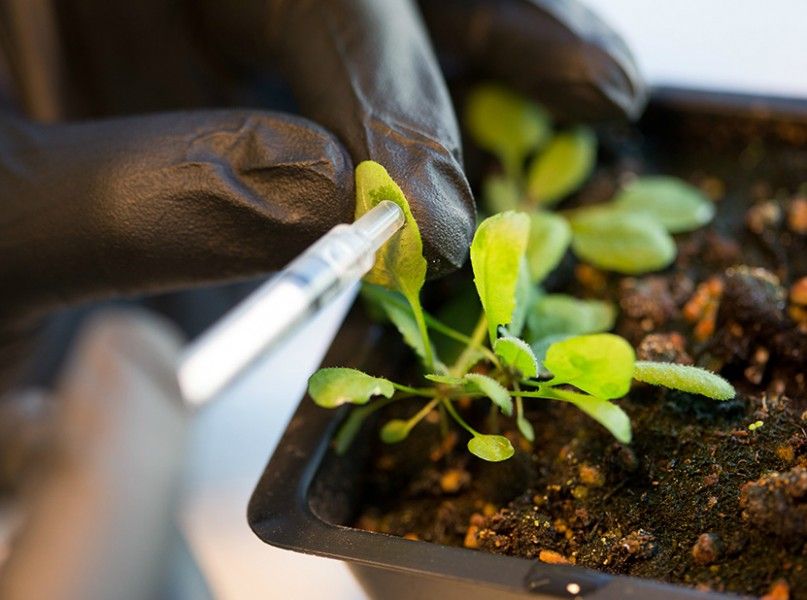Ladies and gents, bionic plants have arrived.
MIT researchers have stumbled across a trait that blows other technology outta the water. By dousing plant DNA on single-walled carbon nanotubes, (which are exactly what they sound like–tiny carbon tubes,) researchers have found a way to increase a plant’s photosynthesis productivity by three times. By using it’s own DNA and a little carbon, plants have been shown to use these tubes to their own advantage.
 Popular Mechanics explains it in layman’s-terms best:“Like a flood of needles, an onslaught of carbon nanotubes seeps in through a plant’s leaves’ and beelines toward each cells’ chloroplasts—the hub where sunlight transforms into chemical energy. These nanotubes, thin straws of latticework atoms, pierce the energetic chloroplasts and imbed themselves like a thousand splinters. But rather than irritating or damaging the cell, the foreign particles are giving the plant a hardware upgrade.”So how exactly do these nanotubes help the plant? As Knovel.com explains, it’s a three-fold system. First, the nanotubes help speed up the electrons in the plant by about 30 percent, making “in vivo” transportation of photosynthetic electron flow more efficient. Faster speeds of electricity means higher productivity.
Popular Mechanics explains it in layman’s-terms best:“Like a flood of needles, an onslaught of carbon nanotubes seeps in through a plant’s leaves’ and beelines toward each cells’ chloroplasts—the hub where sunlight transforms into chemical energy. These nanotubes, thin straws of latticework atoms, pierce the energetic chloroplasts and imbed themselves like a thousand splinters. But rather than irritating or damaging the cell, the foreign particles are giving the plant a hardware upgrade.”So how exactly do these nanotubes help the plant? As Knovel.com explains, it’s a three-fold system. First, the nanotubes help speed up the electrons in the plant by about 30 percent, making “in vivo” transportation of photosynthetic electron flow more efficient. Faster speeds of electricity means higher productivity.
Second, the nanotubes (also called SWNTs) transport and “irreversibly localize within the lipid envelope” of extracted plant chloroplasts, which is what promotes over three times higher photosynthetic activity.
Finally, these nanotubes not only increase the speed of the electrons, but also increase the spectrum of light that the plant can absorb, making the plant able to use more of the energy it receives. Plants are typically unable to use near-infrared, green and ultraviolet wavelengths, according to knovel.com, but nanotubes changes that.
The news comes from MIT researchers, who published their latest study in Nature Materials on Sunday. And while we might be excited about the accidental discovery, the researchers aren’t yet sure what to make of the findings.
“There are a few different mechanisms that could be being used,” Michael Strano, one of the chemical engineers, said. “The nanotubes could be directly producing electrons, or they could be doing something called resonance energy transfer…. But we’re not exactly sure and I don’t want to speculate too much.”
We’ll leave that speculation up to the experts. In the meantime, we’re left to ask–who’ll be the first to start using this tech?
FEATURED PHOTO: http://www.laboratoryequipment.com




